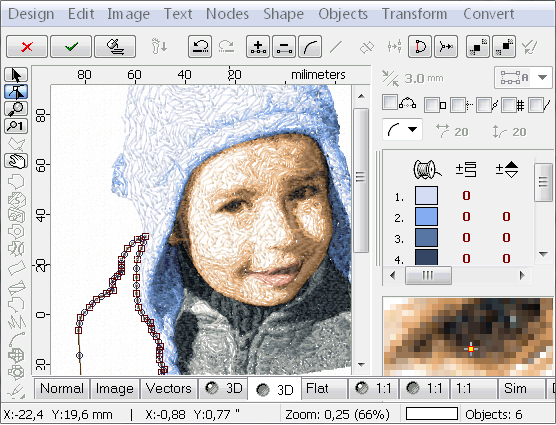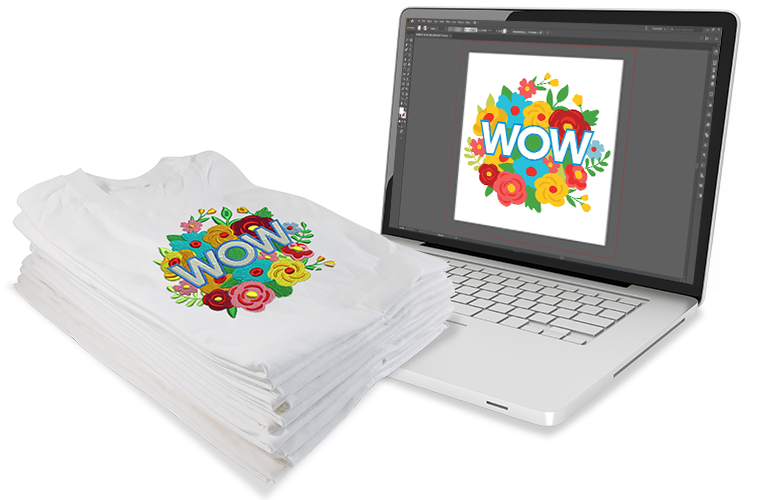Effective Digitizing for Embroidery: Quick Turnaround
Effective Digitizing for Embroidery: Quick Turnaround
Blog Article
Mastering the Needlework Digitizing Process: Your Ultimate Guide
Needlework digitizing is a meticulous craft that requires precision and expertise to equate elaborate layouts right into digital formats for device embroidery. As artisans begin on this trip to understand the embroidery digitizing process, a detailed understanding of the essentials establishes the structure for quality.

Recognizing Embroidery Digitizing Essentials
Embroidery digitizing fundamentals create the foundation upon which complex layouts are translated into machine-readable layouts for precise sewing. This initial action in the embroidery digitizing process is essential for guaranteeing that the final stitched item is a devoted representation of the initial design. Comprehending embroidery digitizing essentials includes comprehending crucial principles such as stitch types, stitch direction, density, padding, and draw settlement.
Stitch types play an essential role in determining the visual and textural result of the stitched design. By picking the ideal stitch kind, whether it be satin, fill, or running stitch, digitizers can achieve the wanted effect and boost the general top quality of the needlework. In addition, sew instructions affects the circulation and measurement of the layout, while thickness determines the spacing and protection of the stitches.
Additionally, padding sewing provides stability to the style by protecting the fabric and avoiding distortion throughout the embroidery process. Pull payment is another essential factor to consider to neutralize the natural propensity of textile to agreement when stitched. Understanding these needlework digitizing fundamentals is essential for producing professional-quality embroidered products.
Choosing the Right Digitizing Software Program
Picking the suitable digitizing software application is a crucial decision that significantly influences the efficiency and high quality of the needlework digitizing procedure. Digitizing for Embroidery. When picking the appropriate digitizing software program, it is necessary to think about aspects such as the complexity of styles you plan to develop, the user-friendliness of the software application, the level of customer support used, and the compatibility with your embroidery machine
There are different digitizing software application options readily available out there, ranging from fundamental programs for great post to read beginners to sophisticated software for specialist digitizers. Some preferred selections consist of Wilcom EmbroideryStudio, Hatch Embroidery Software Application, and PulseID. These software application packages provide a large range of tools and functions to help you create detailed styles easily.
Before choosing, it is suggested to explore the various software choices with complimentary trials or demonstrations to figure out which one best suits your demands. In addition, reading evaluations and seeking referrals from seasoned digitizers can offer beneficial insights into the staminas and weaknesses of each software (Digitizing for Embroidery). By very carefully evaluating your demands and contrasting the attributes of different digitizing software program, you can make an informed choice that improves your embroidery digitizing process
Digitizing Devices and Methods

Optimizing Layout Setup for Embroidery
Understanding the details of style setups is fundamental in achieving ideal outcomes in the needlework digitizing process, building upon the structure laid by comprehending digitizing tools and methods. When optimizing layout settings for needlework, it is important to take into consideration aspects such as stitch kind, thickness, underlay, draw settlement, and enrollment. Registration settings straighten various elements of the style properly, maintaining general layout integrity.

Troubleshooting Common Digitizing Issues
When running into informative post typical digitizing issues throughout the needlework process, it is vital to recognize the origin and carry out effective remedies immediately. One common issue is stitch density concerns, where stitches might be too thick, causing the material to tighten, or too sporadic, resulting in spaces in the layout. Changing the stitch density settings in the digitizing software program can assist resolve this concern.
Another regular challenge is thread breaks throughout the embroidery process. This can happen due to different factors such as incorrect stress setups, boring needles, or making use of low-quality string. Making sure proper upkeep of the needlework device, consisting of normal needle changes and tension modifications, can minimize the visit homepage incident of string breaks.
Additionally, layout enrollment errors can lead to misaligned aspects within the needlework layout. Checking the layout placement in the digitizing software and making needed changes before sewing can help in preventing this problem. By attending to these usual digitizing issues quickly and successfully, you can make certain a smoother embroidery procedure and high-quality finished products.
Final Thought
To conclude, mastering the needlework digitizing process needs a solid understanding of the basics, the right choice of software, and understanding of tools and techniques. Enhancing layout settings and fixing usual digitizing issues are crucial steps in ensuring top quality needlework outcomes. By following these steps vigilantly, one can accomplish accuracy and performance in the digitizing procedure.
Report this page